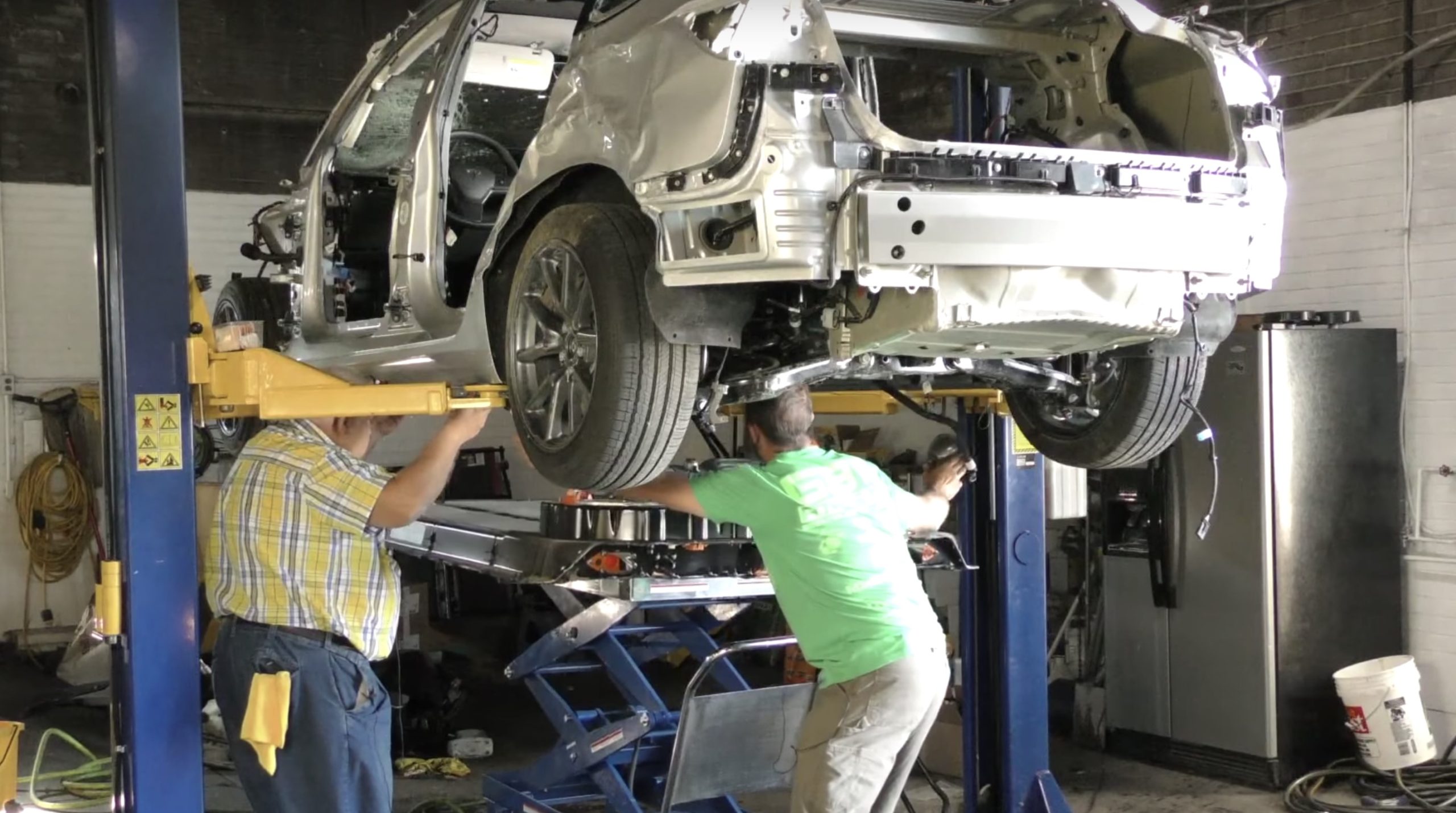
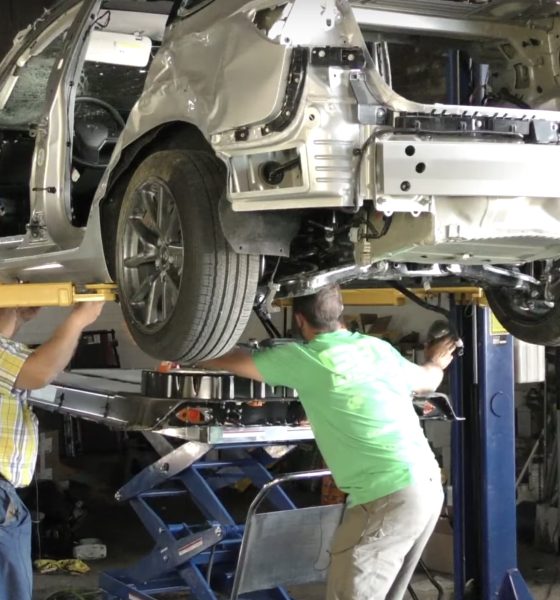
News
Tesla responds to Reuters’ claims of faulty suspension issues
Tesla has posted a rebuttal to a Reuters investigation which alleged that the company had been blaming drivers for alleged vehicle abuse despite knowing that its cars’ suspension components were faulty. The issue has caught the attention of many, including Democratic Senators Richard Blumenthal (D-Conn.) and Edward Markey (D-Mass.), both of whom have called on Tesla to initiate a recall about the reported issue.
Reuters‘ investigation indicated that Tesla had informed the NHTSA that frequent failures of components like its vehicles’ aft link were due to drive misuse. Despite this, the publication claimed that Tesla’s own engineers have tracked frequent failures of the components over the years. Tesla’s response, which was posted on X, provided a thorough rebuttal of the publication’s claims.
Tesla highlighted several issues with Reuters‘ investigation, such as its misleading headline and the lack of important context about the issue. The company also reiterated its service principles, which aim to provide the best support possible to its consumer base.
Reuters published an article that leads with a wildly misleading headline and is riddled with incomplete and demonstrably incorrect information.
This latest piece vaguely and nonsensically suggests there are thousands upon thousands of disgruntled Tesla customers. It’s…— Tesla (@Tesla) December 27, 2023
Following is Tesla’s response to Reuters‘ investigation.
Reuters published an article that leads with a wildly misleading headline and is riddled with incomplete and demonstrably incorrect information.
This latest piece vaguely and nonsensically suggests there are thousands upon thousands of disgruntled Tesla customers. It’s nonsensical because it’s nonfactual—the reality is Tesla’s customer retention is among the best and highest in the industry.
Misleading headline:
“Tesla blamed drivers for failures of parts it long knew were defective.”
Reality (buried in the article):
Tesla paid for most of the 120,000 vehicle repairs under warranty.
Manufactured story:
The customer photo represents not a failed component, but instead a post crash component that was damaged in the course of reducing the adverse effects of a collision. The customer was informed that Tesla was able to review the telemetry and understood there was a crash that resulted in this repair not being covered by warranty.
Most, if not all, manufacturer warranties exclude damages caused by a crash because that is the point of insurance coverage.
Helpful context:
Tesla has the most advanced vehicle telemetry system that can identify emerging issues, determine scope, and allow for faster vehicle and service improvements than has ever been seen in the auto industry. We take action as soon as we see a problem, something that should be celebrated as best-in-class, and is often cited by our regulators as a major safety advantage.
False accusation:
The author has conflated a noise-related (non-safety) issue with a range of unrelated and disconnected service actions. Contrary to the article’s statements based on erroneous data, Tesla is truthful and transparent with our safety regulators around the globe and any insinuation otherwise is plain wrong.
Tesla Service Principles:
a. Our service technicians and advisors diagnose, maintain and fix our customers’ cars efficiently and are not incentivized to profit off customers’ repair needs.
b. Tesla provides our service employees with excellent compensation and benefits packages. They don’t work off of commission like at other dealers who are incentivized to upsell or overcharge their customers.
c. The best service is no service. When service must be done, we fix 90%+ problems without even needing the customer present – either through over-the-air updates or with mobile service at a customer’s house or workplace.
To see Tesla’s approach in action, one can refer to this maintenance study from earlier this year, “Tesla was named the cheapest luxury car brand to maintain..” → https://autos.yahoo.com/tesla-named-cheapest-luxury-car-110000613.html
This cherry-picking approach to journalism results in missing the truth, which is a pattern in many of the negative articles about Tesla.
Using one customer’s one-sided version of events as the universal experience of all customers paints a false and misleading picture of Tesla. In reality, for every upset customer, there are hundreds more who are thrilled with their Tesla and eager to repeat their business. The numbers don’t lie in terms of repeat sales and customer satisfaction.
We strive to make every customer a lifelong member of the Tesla family.
While others may have their own agendas, our principles have been the same since the beginning: to make the safest cars in the world, which are easiest to maintain, while accelerating the world’s transition to sustainable energy.
Don’t hesitate to contact us with news tips. Just send a message to simon@teslarati.com to give us a heads up.

News
Tesla dominates in the UK with Model Y and Model 3 leading the way
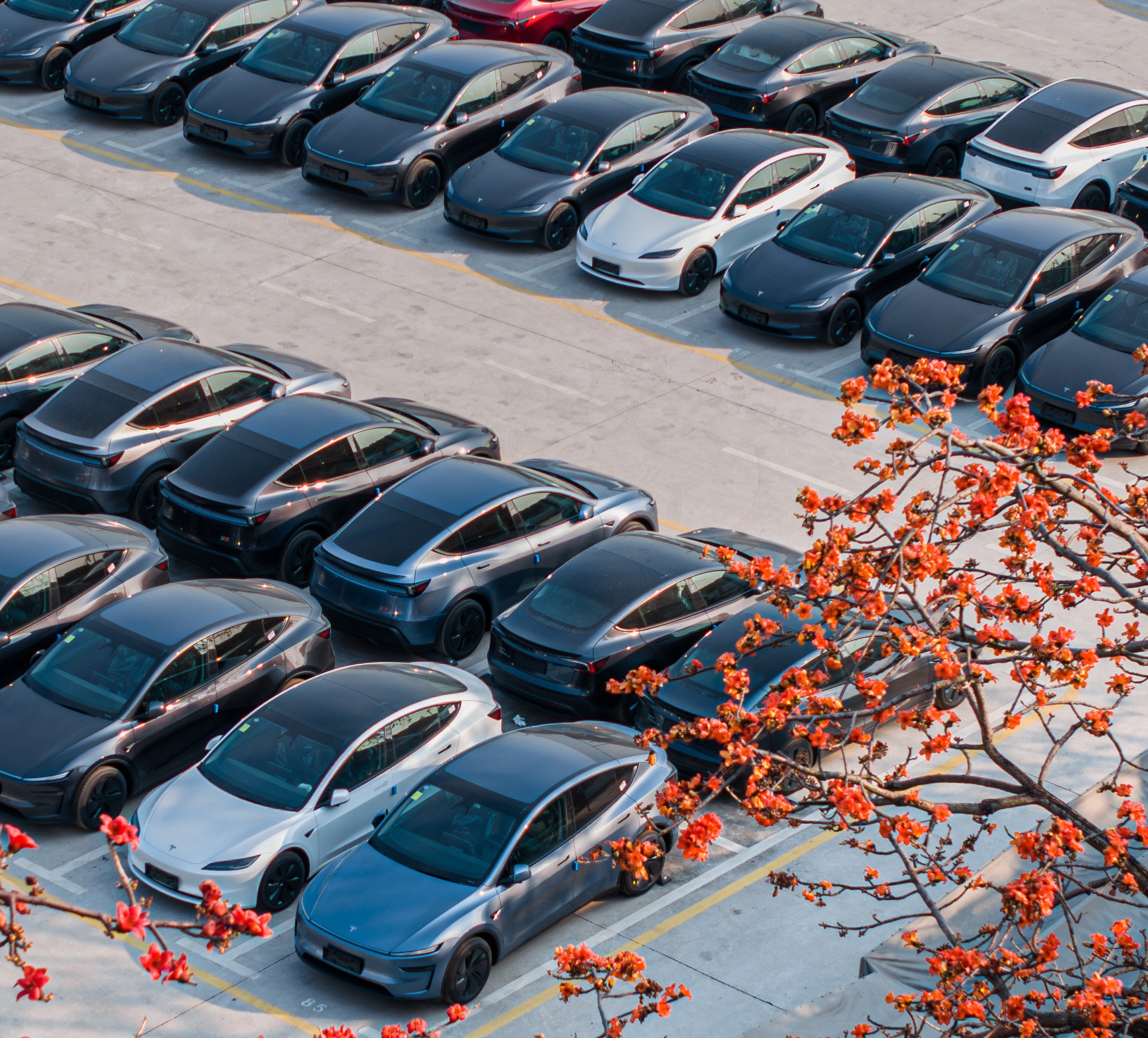
Tesla is dominating in the United Kingdom so far through 2025, and with about two weeks left in the year, the Model Y and Model 3 are leading the way.
The Model Y and Model 3 are the two best-selling electric vehicles in the United Kingdom, which is comprised of England, Scotland, Wales, and Northern Ireland, and it’s not particularly close.
According to data gathered by EU-EVs, the Model Y is sitting at 18,890 units for the year, while the Model 3 is slightly behind with 16,361 sales for the year so far.
The next best-selling EV is the Audi Q4 e-tron at 10,287 units, lagging significantly behind but ahead of other models like the BMW i4 and the Audi Q6 e-tron.
GOOD NEWS 🇬🇧 Tesla is absolutely crushing the UK electric vehicle market in 2025 💥
The numbers are in, and the dominance is clear. With an impressive amount of 42,270 vehicles delivered year-to-date, the brand now commands a solid 9.6% market share of the total auto market 🆒… pic.twitter.com/dkiGX9kzd0
— Ming (@tslaming) December 18, 2025
The Model Y has tasted significant success in the global market, but it has dominated in large markets like Europe and the United States.
For years, it’s been a car that has fit the bill of exactly what consumers need: a perfect combination of luxury, space, and sustainability.
Both vehicles are going to see decreases in sales compared to 2024; the Model Y was the best-selling car last year, but it sold 32,610 units in the UK. Meanwhile, the Model 3 had reached 17,272 units, which will keep it right on par with last year.
Tesla sold 50,090 units in the market last year, and it’s about 8,000 units shy of last year’s pace. It also had a stronger market share last year with 13.2 percent of the sales in the market. With two weeks left in 2025, Tesla has a 9.6 percent market share, leading Volkswagen with 8 percent.
The company likely felt some impact from CEO Elon Musk’s involvement with the Trump administration and, more specifically, his role with DOGE. However, it is worth mentioning that some months saw stronger consumer demand than others. For example, sales were up over 20 percent in February. A 14 percent increase followed this in June.
News
Tesla Insurance officially expands to new U.S. state
Tesla’s in-house Insurance program first launched back in late 2019, offering a new way to insure the vehicles that was potentially less expensive and could alleviate a lot of the issues people had with claims, as the company could assess and repair the damage itself.
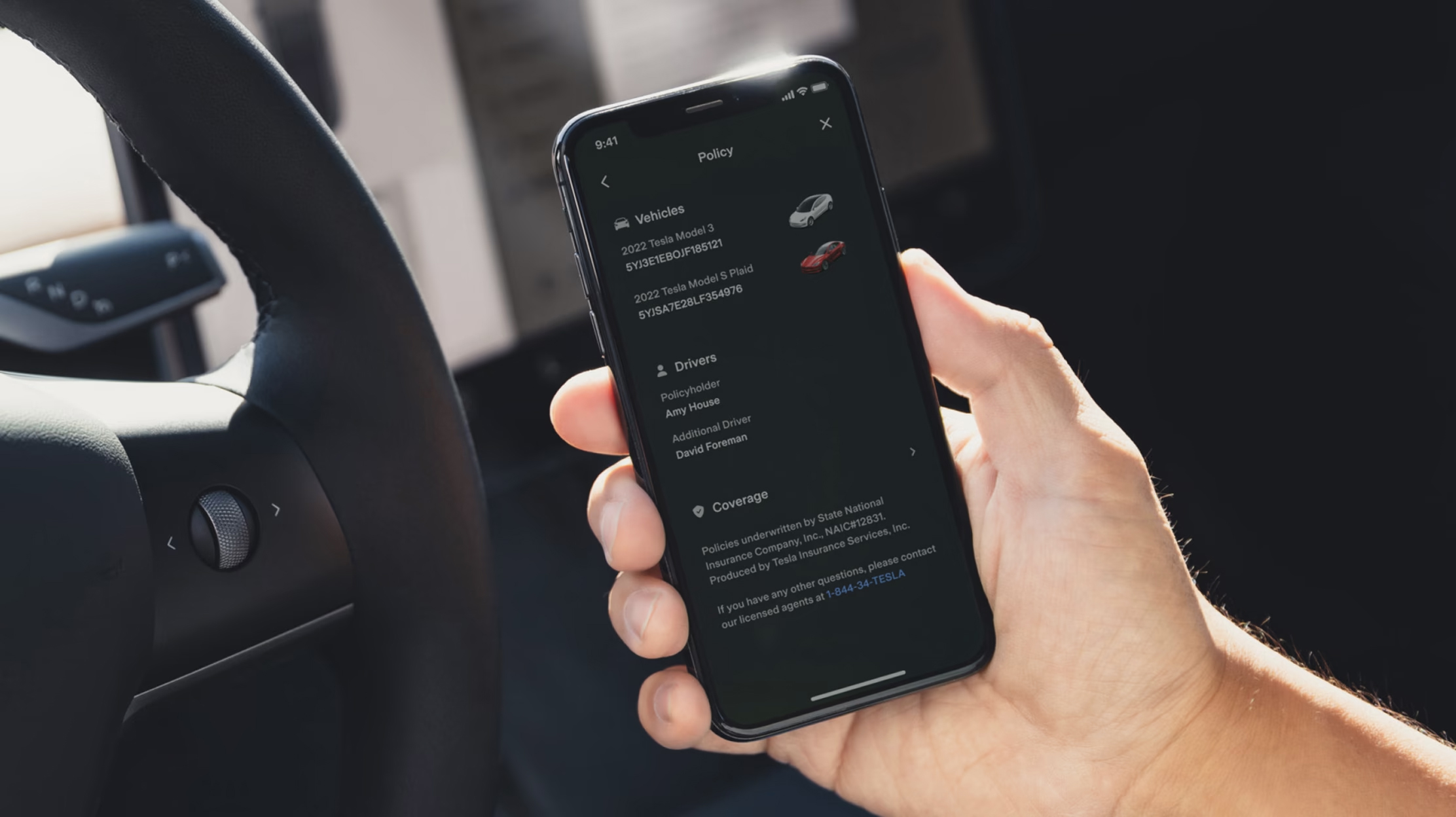
Tesla Insurance has officially expanded to a new U.S. state, its thirteenth since its launch in 2019.
Tesla has confirmed that its in-house Insurance program has officially made its way to Florida, just two months after the company filed to update its Private Passenger Auto program in the state. It had tried to offer its insurance program to drivers in the state back in 2022, but its launch did not happen.
Instead, Tesla refiled the paperwork back in mid-October, which essentially was the move toward initiating the offering this month.
BREAKING: Tesla Insurance has just officially launched in Florida.
This is the first new state to receive @Tesla Insurance in more than 3 years. In total, Tesla insurance is now available in 13 U.S. states (map in thread below of all the states).
Tesla Insurance in Florida uses… pic.twitter.com/bDwh1IV6gD
— Sawyer Merritt (@SawyerMerritt) December 17, 2025
Tesla’s in-house Insurance program first launched back in late 2019, offering a new way to insure the vehicles that was potentially less expensive and could alleviate a lot of the issues people had with claims, as the company could assess and repair the damage itself.
It has expanded to new states since 2019, but Florida presents a particularly interesting challenge for Tesla, as the company’s entry into the state is particularly noteworthy given its unique insurance landscape, characterized by high premiums due to frequent natural disasters, dense traffic, and a no-fault system.
Annual average premiums for Florida drivers hover around $4,000 per year, well above the national average. Tesla’s insurance program could disrupt this, especially for EV enthusiasts. The state’s growing EV adoption, fueled by incentives and infrastructure development, aligns perfectly with Tesla’s ecosystem.
Moreover, there are more ways to have cars repaired, and features like comprehensive coverage for battery damage and roadside assistance tailored to EVs address those common painpoints that owners have.
However, there are some challenges that still remain. Florida’s susceptibility to hurricanes raises questions about how Tesla will handle claims during disasters.
Looking ahead, Tesla’s expansion of its insurance program signals the company’s ambition to continue vertically integrating its services, including coverage of its vehicles. Reducing dependency on third-party insurers only makes things simpler for the company’s automotive division, as well as for its customers.
News
Tesla Full Self-Driving gets sparkling review from South Korean politician
“Having already ridden in an unmanned robotaxi, the novelty wasn’t as strong for me, but it drives just as well as most people do. It already feels like a completed technology, which gives me a lot to think about.”
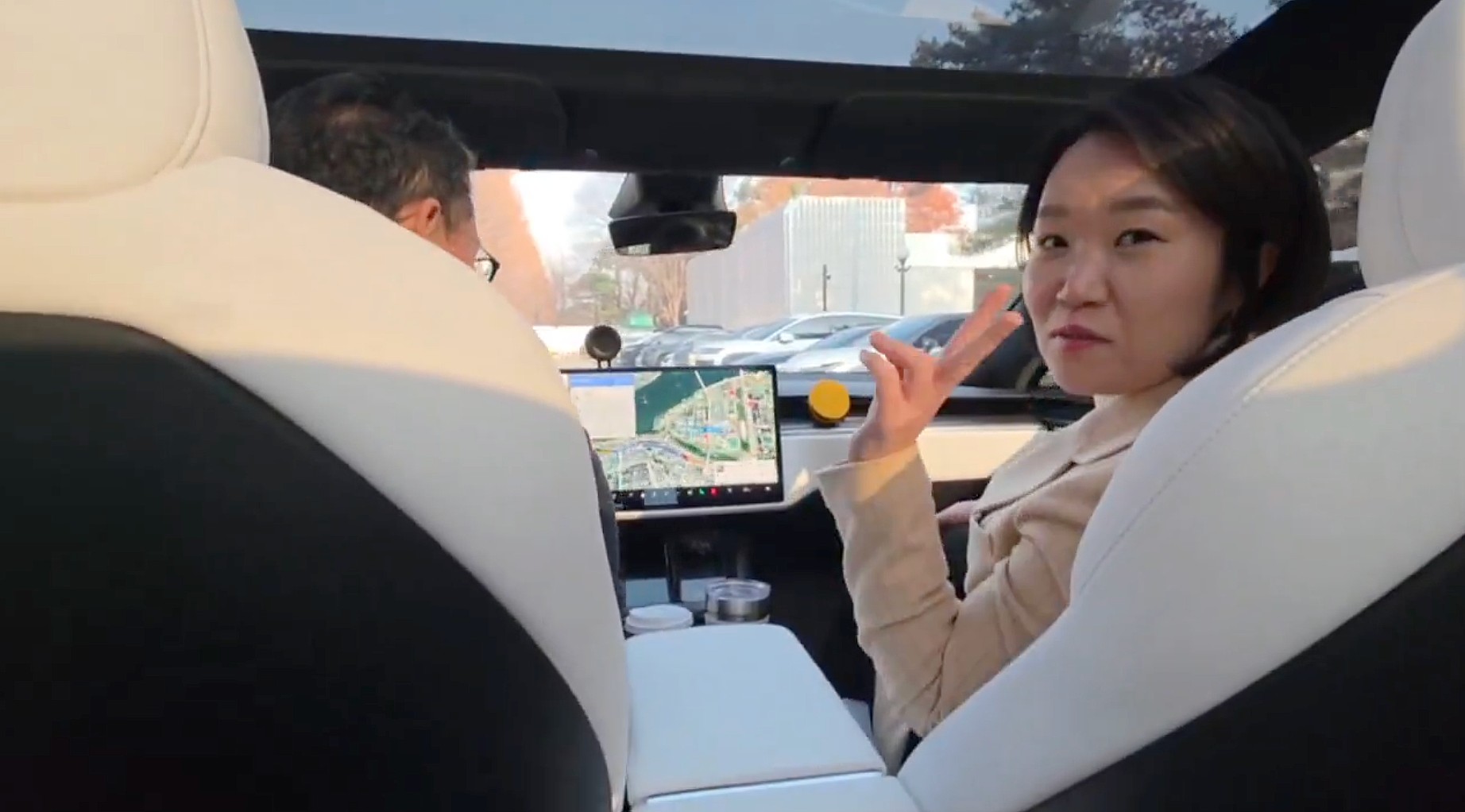
Tesla Full Self-Driving got its first sparkling review from South Korean politician Lee So-young, a member of the country’s National Assembly, earlier this week.
Lee is a member of the Strategy and Finance Committee in South Korea and is a proponent of sustainable technologies and their applications in both residential and commercial settings. For the first time, Lee was able to utilize Tesla’s Full Self-Driving technology as it launched in the country in late November.
Her thoughts on the suite were complimentary to the suite, stating that “it drives just as well as most people do,” and that “it already feels like a completed technology.”
드디어 오늘, 서울에서 테슬라 FSD 체험 했습니다.
JiDal Papa님의 모델S 협찬에 힘입어^^ 파파님 정말 감사합니다.
국회 -> 망원시장 -> 홍익대 -> 국회 복귀 코스였고요.
이미 무인 로보택시를 타봐서 그런지 신기함은
덜했지만, 웬만한 사람만큼 운전을 잘하네요.이미 완성된 기술이라고… pic.twitter.com/8pAidHBpRG
— 이소영 국회의원 (Soyoung Lee) (@im_soyounglee) December 17, 2025
Her translated post says:
“Finally, today I got to experience Tesla FSD in Seoul. Thanks to the Model S sponsored by JiDal Papa^^, I’m truly grateful to Papa. The route was from the National Assembly -> Mangwon Market -> Hongik University -> back to the National Assembly. Having already ridden in an unmanned robotaxi, the novelty wasn’t as strong for me, but it drives just as well as most people do. It already feels like a completed technology, which gives me a lot to think about. Once it actually spreads into widespread use, I feel like our daily lives are going to change a lot. Even I, with my license gathering dust in a drawer, don’t see much reason to learn to drive a manual anymore.”
Tesla Full Self-Driving officially landed in South Korea in late November, with the initial launch being one of Tesla’s most recent, v14.1.4.
It marked the seventh country in which Tesla was able to enable the driver assistance suite, following the United States, Puerto Rico, Canada, China, Mexico, Australia, and New Zealand.
It is important to see politicians and figures in power try new technologies, especially ones that are widely popular in other regions of the world and could potentially revolutionize how people travel globally.








